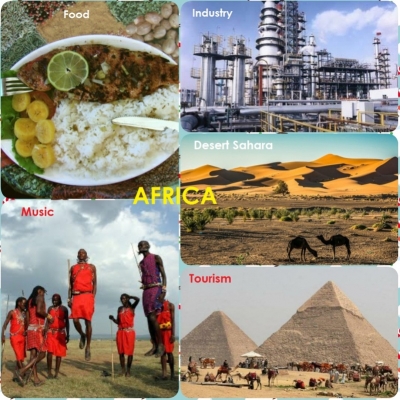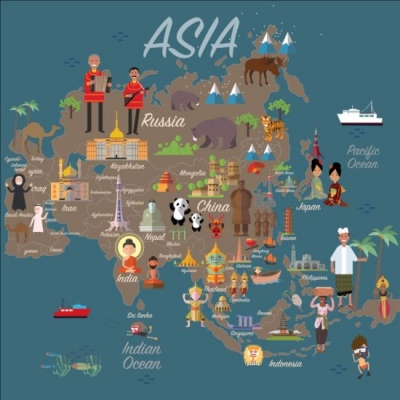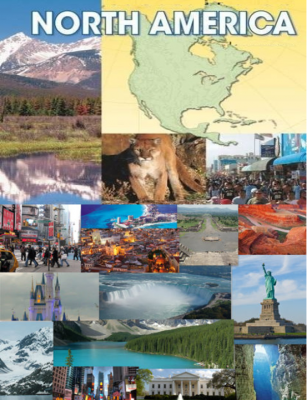What do you know about Africa?

AFRICA
The discovery of fossilized remains in Africa has led experts to agree that the world’s first humans originated from this continent millions of years ago. Today, the population stands at about 1.3 billion, with many people living in rural regions of the 54 countries: Africa’s diversity is seen in its varied cultures, long-standing customs, striking scenery, and wildlife. This captivating mix attracts a steady stream of visitors.
- FOOD
Africa’s staple foods are crops such as maize, yams, cassava, and plantains. Fish and meat are rarely eaten as a main dish but are added to other ingredients, including beans and lentils. In towns all over Morocco and Tunisia, people sell their home-grown produce at local markets.
- INDUSTRY
Nigeria, Algeria, and Libya are major sources of oil and natural gas, while gold and diamonds have made South Africa prosperous. Minerals are mined in the Congo and Zambia, and copper and tin are exported from Namibia.
- MUSIC
Celebrations in Africa are usually accompanied by music, with percussion instruments the most popular. Many types of drums are used to create traditional beats, with animal horns and shells blown to make different sounds. Stringed instruments, such as the kora, and double bells, such as the kuge, are also played.
- LANDSCAPE
North Africa boasts the world’s largest desert, the Sahara, where temperatures can top 50°C (122°F). Africa’s centre is mainly rainforest and rivers, a contrast to the grassy plains down south. Natural landmarks include Kilimanjaro (Africa’s highest mountain), the Nile (the longest river), and Lake Victoria (the largest lake).
- TOURISM
Visitors to Africa go on safari to see the wildlife at close range. The economy is also boosted by tourists soaking up the sun on the beaches of Tunisia, Morocco, and South Africa, as well as the islands of the Seychelles. One of Africa’s most visited historic sites is the ancient pyramids of Giza in Egypt, built some 4,500 years ago.
- WILDLIFE
Game reserves in Kenya and Tanzania have been established to protect Africa’s wildlife. Today, zebras, giraffes, elephants, and big cats roam freely without fear of human hunters. The continent’s largest island is also rich with wildlife. Three-quarters of Madagascar’s animals are found nowhere else.
- FARMING
Many Africans in rural villages grow root vegetables and maize (corn) to sell at markets. Northern Africa has the best climate for cultivating dates, olives, and citrus fruits. Kenya’s rainfall yields high tea production, while the Ivory Coast and Ghana put together produce more than half the world’s cocoa. Cotton is grown for export.
Picture Credit : Google

